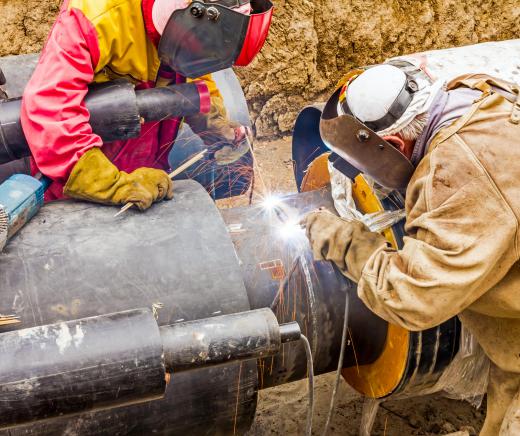Linishing is a type of finishing technique used to smooth or flatten metal objects. This process is similar to sanding, but differs in key ways, including how it influences the appearance of the metal. Linishing is not only used to smooth and polish an item, but also to improve overall flatness and create a level, even surface. This process can be used to finish objects ranging from tools to building materials, and plays a major role in automotive finishing and repair.
The primary use for linishing is to create a level surface on the face of an object. For example, linishing may be used to smooth out a wavy texture on a metal building panel, or to create a perfectly-cylindrical metal pipe. In this way, linishers work in a number of dimensions, and often work on metal beyond a two-dimensional plane.

In addition, linishing techniques are used to remove joints and seams from metal that has been welded or fused together. It can also be used to clean away surface damage, including pitting, rust, or old coatings that are no longer needed. Depending on the metal, this technique may also add strength and improve the corrosion-resistance of the object.
When used on aluminum, linishing creates a distinct finish with a satiny, matte texture. This process gives the aluminum an attractive appearance and eliminates the need for painting or powder coating. Linished aluminum is often used to make furniture or wall cladding, as well as jewelry and consumer goods.
Metal workers rely on a variety of linishing machines to alter or finish metal. These machines often resemble a belt sander or grinder, but offer their own unique benefits. In factories and large workshops, an industrial linisher can be used to finish large metal objects. These machines feature heavy-duty rotating belts so that the metal can be ground against the surface of the belt. Many linisher machines offer multiple work surfaces so that users can perform both edge work and face, or surface work.
For smaller projects, a hand linisher my be sufficient. These tools feature spinning discs or rotating belts, yet are often small enough for hand-held operation. Very small linishing hand tools can be used for small surfaces and fine sanding techniques.
All linishing equipment must be loaded with special abrasive paper or belts. While these materials look like sandpaper, they often feature a finer texture to meet the demands of delicate metalwork. Almost all linish work can be performed either wet or dry, depending on the desired finish.
